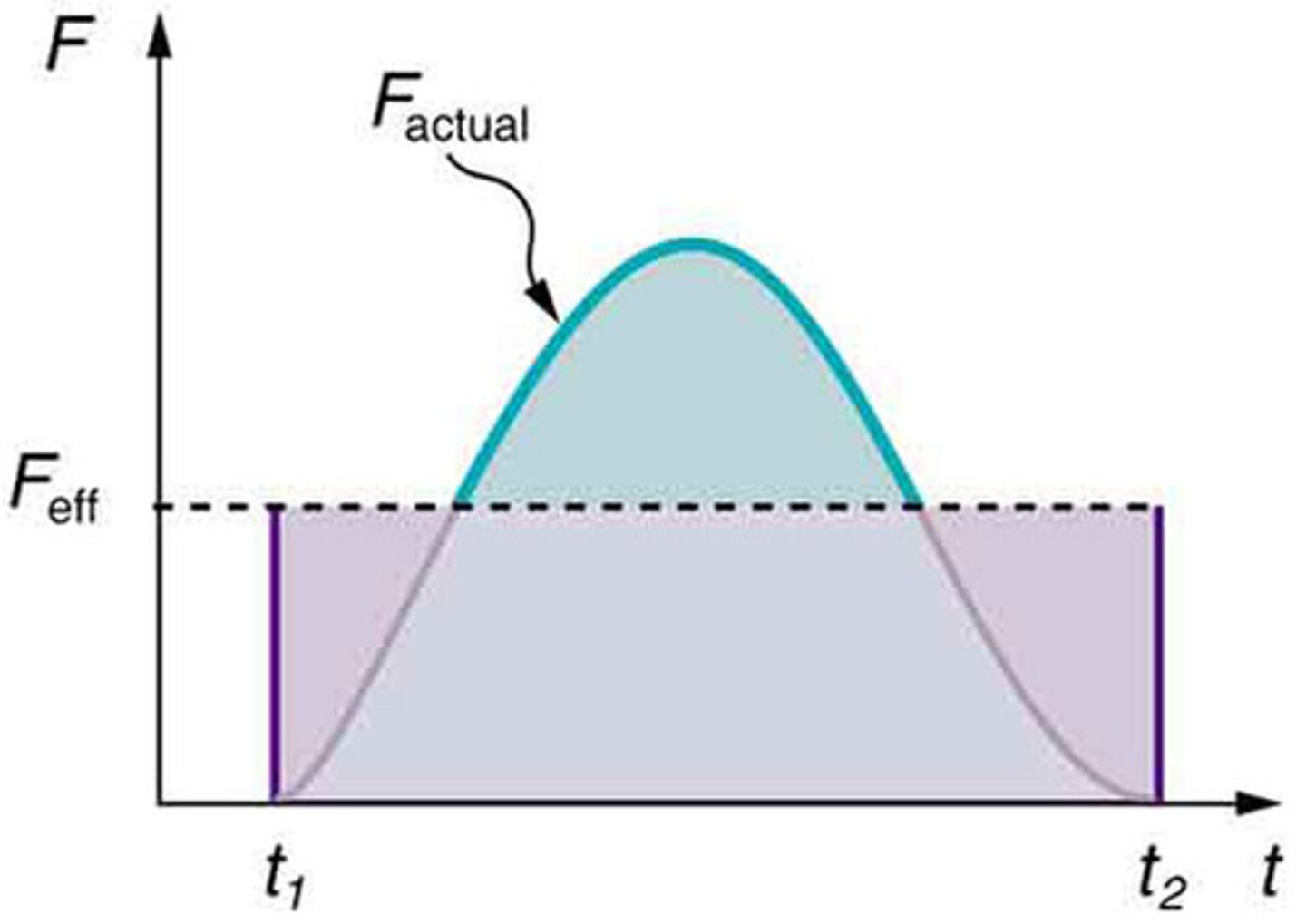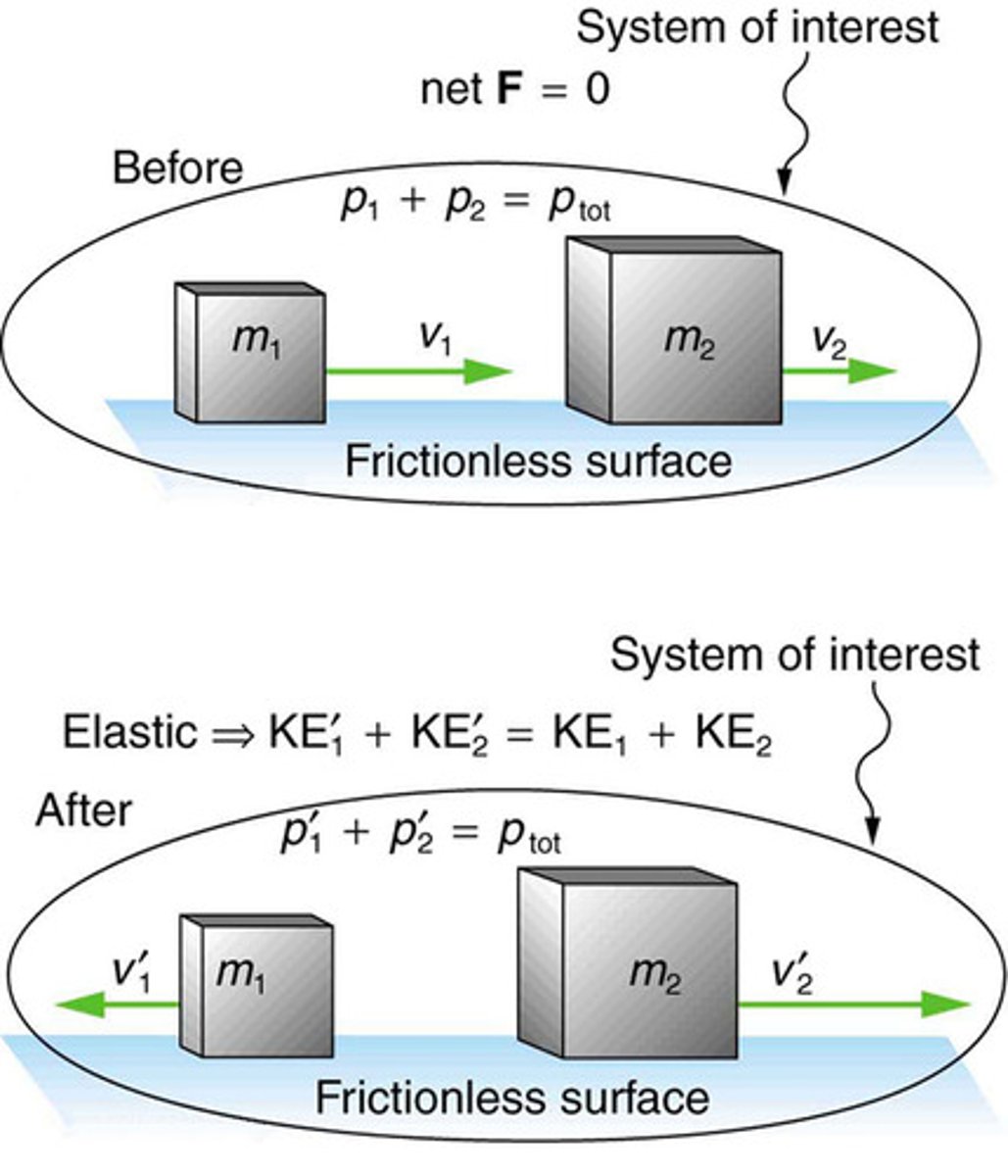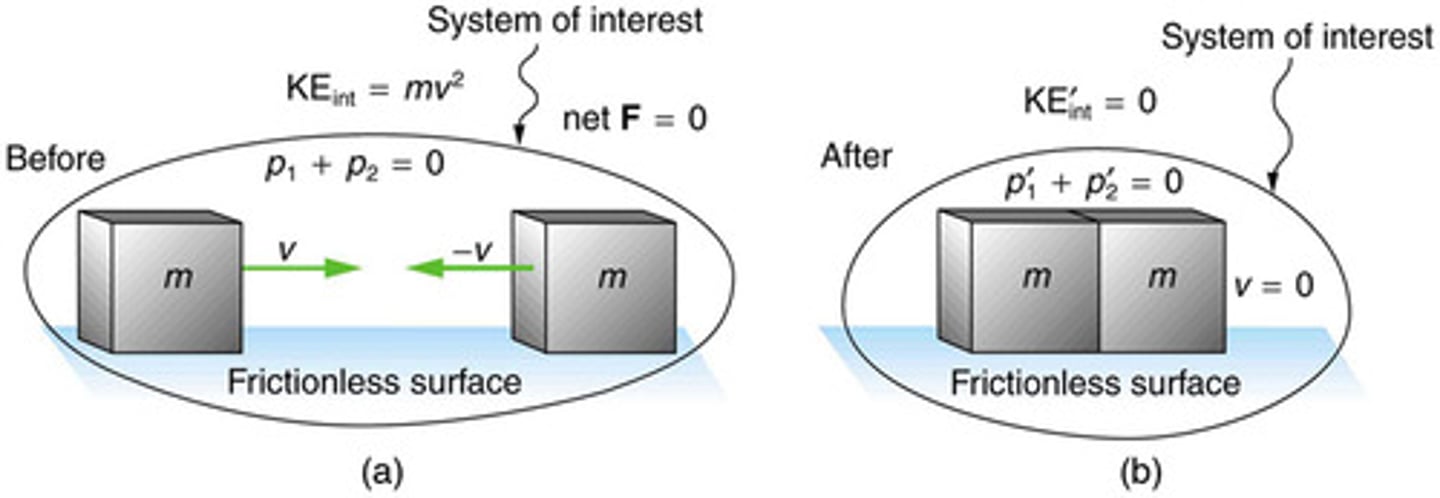Chapter 7: Linear Momentum and Collisions - Review Terms
1/29
There's no tags or description
Looks like no tags are added yet.
Name | Mastery | Learn | Test | Matching | Spaced |
|---|
No study sessions yet.
30 Terms
Linear Momentum
Linear momentum is defined as the product of a system’s mass multiplied by its velocity, expressed as p = mv. It is a vector quantity with the same direction as velocity and is measured in kg·m/s.
Momentum and Mass Relationship
Momentum is directly proportional to the object's mass and velocity. Greater mass or velocity results in greater momentum.
Newton's Second Law of Motion (Momentum Form)
Newton's second law of motion states that the net external force equals the change in momentum of a system divided by the time over which it changes, expressed as F_net = Δp/Δt.
Change in Momentum
The change in momentum (Δp) is given by the change in the product of mass and velocity, Δp = Δ(mv).
Constant Mass and Newton's Second Law
For constant mass, Newton's second law of motion can be expressed as F_net = mΔv/Δt, which simplifies to F_net = ma when mass is constant.
Force and Momentum Relationship
Force acting over time can change momentum, and Newton’s second law of motion can be stated in terms of momentum, making it applicable to systems with changing mass.
Impulse
Impulse is the product of the average net external force and the time duration over which it acts, resulting in a change in momentum.
Change in Momentum
Change in momentum (Δp) is equal to the impulse applied to an object, calculated as the product of the net force and the time duration (Δp = F_net Δt).
Average Effective Force
The average effective force is a constant force that produces the same impulse as a time-varying force over a given time interval.

Impulse-Momentum Theorem
The impulse-momentum theorem states that the impulse on an object is equal to the change in its momentum.
Collision Time
Collision time is the duration over which a force acts during a collision, affecting the magnitude of the force experienced.
Crumple Zones
Crumple zones in vehicles extend the collision time, reducing the force experienced during an impact and enhancing safety.
Newton's Third Law
Newton's Third Law states that for every action, there is an equal and opposite reaction, relevant in analyzing forces during collisions.
Impulse and Momentum Conservation
In isolated systems, the total momentum before and after an event is conserved, with impulse causing internal changes.
Conservation of Momentum
The principle stating that the total momentum of an isolated system remains constant if no external forces act on it.

Impulse
The change in momentum of an object when a force is applied over a time interval, given by Δp = FΔt.
Isolated System
A system in which the net external force is zero, meaning no external forces affect the total momentum.
Newton's Third Law
For every action, there is an equal and opposite reaction, which implies that forces between two objects are equal in magnitude and opposite in direction.
Collision
An event where two or more bodies exert forces on each other in a relatively short time, often analyzed using conservation of momentum.
Newton's Second Law in terms of Momentum
Expressed as F_net = Δp/Δt, indicating that the net force on a system is equal to the rate of change of its momentum.
Elastic Collision
An elastic collision is one that conserves internal kinetic energy.

Conservation of Momentum
The principle stating that the total momentum of a closed system is constant if no external forces act on it.

Example of Nearly Elastic Collision
Collisions between steel blocks on ice or carts with spring bumpers on an air track.

Inelastic Collision
An inelastic collision is one in which the internal kinetic energy changes (it is not conserved).
Perfectly Inelastic Collision
A collision in which the objects stick together, reducing internal kinetic energy to the minimum while conserving momentum.

Conservation of Momentum
In a closed system, the total momentum before and after a collision remains constant, provided no external forces act on it.
Elastic Collision
A collision in which internal kinetic energy is conserved.
Inelastic collision
A collision where the total kinetic energy is not conserved, often resulting in deformation or generation of heat.
Momentum
A vector quantity defined as the product of an object's mass and velocity, conserved in isolated systems.
Newton's Third Law of Motion
For every action, there is an equal and opposite reaction.